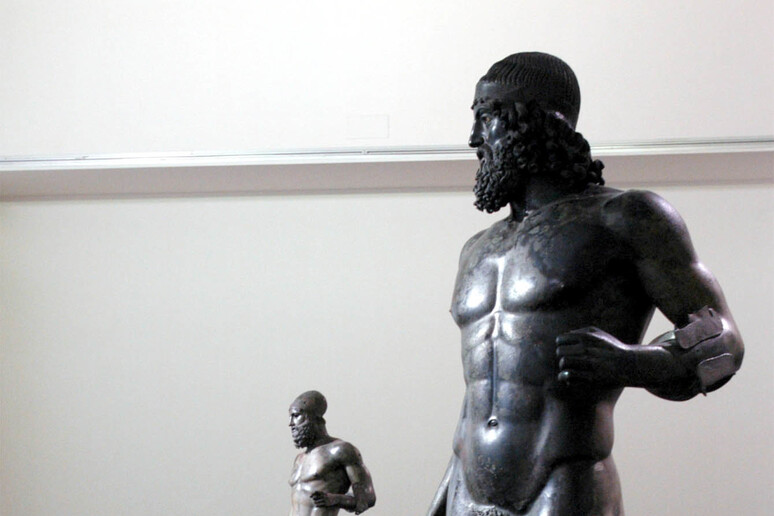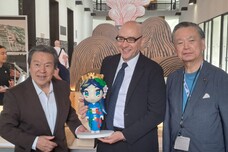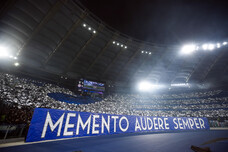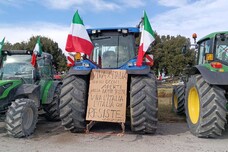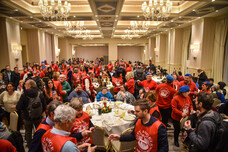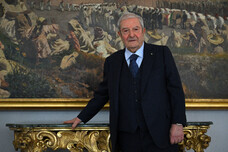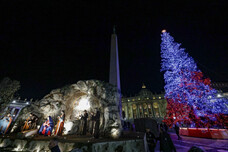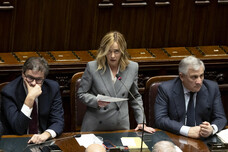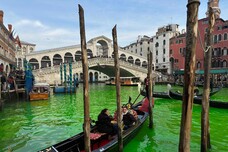The southern region of Calabria on
Tuesday marked the 50th anniversary of the discovery of the two
world-famous ancient Greek warrior statues called the Riace
Bronzes on August 16, 1972.
"They are unique works of art and a symbol of Calabria," said
Calabrian Governor Roberto Occhiuto.
A marathon of events embracing visual art, and cinema, among
others, along with exhibits and debates and a dedicated website
will fete Calabria's heritage until 2023 as part of the
anniversary celebrations.
The celebration, "with all the power of art history, heroes,
warriors and legends," is called Bronzi50 1972-2022.
The two statues, which recently became candidates to become
part of UNESCO's heritage, with their perfection - whose
origins and finding are still in part shrouded in mystery - have
become a symbol of Magna Grecia (Greater Greece), Calabria and
the Mediterranean.
Events will have the objective first of promoting Calabria, from
July to September and from October to December and over 2023 to
make the region "travel" across Italy and the world.
"The Riace Bronzes are an investment and a challenge for our
country", Culture Minister Dario Franceschini said in Rome,
during the presentation of celebrations.
"They are a unique attraction, they must become a symbol of
Italy".
The events scheduled include Cubo Stage - an art installation
of a cube with videos, as well as a virtual exhibit on Magna
Grecia with audiovisual and augmented reality and the docufilm
"I Bronzi di Riace", produced by Palomar and directed by Fabio
Mollo.
On Tuesday's anniversary of the discovery the two warriors with
their helms, shields and spears, typical weapons of the
mid-fifth century BC, were at the center of great celebrations:
in Reggio Calabria, with an installation of video mapping on the
façade of the archaeological museum (where the statues are kept)
and on Corso Garibaldi, which has become a "set of excellence"
during the summer.
The entire schedule of initiatives dedicated to the Riace
Bronzes and Magna Grecia is available on the website bronzi50.it
(hashtag ufficiale #bronzi50).
Regional authorities have allowed the famed bronzes to tour
the country just once, in 1981, to sold-out venues in Rome,
Venice, and Milan, a tour in which the statues were seen by over
one million people overall.
A drive to send them to Dubai for the 2020 Expo world's fair,
which was held due to the COVID pandemic from 1 October 2021 to
31 March 2022, eventually failed.
The bronzes had spent four years stuck in bureaucratic red tape
awaiting restoration and were returned for public display at
Reggio Calabria's national archeological museum in December
2013.
Calabria has historically kept a tight grip on the much-loved
statues since their discovery by a diver in 1972.
The exceedingly rare bronzes stand two metres tall and are
an exceptionally realistic rendering of warriors or gods.
Both are naked, with silver lashes and teeth, copper red
lips and nipples, and eyes made of ivory, limestone, and a glass
and amber paste.
ALL RIGHTS RESERVED © Copyright ANSA
